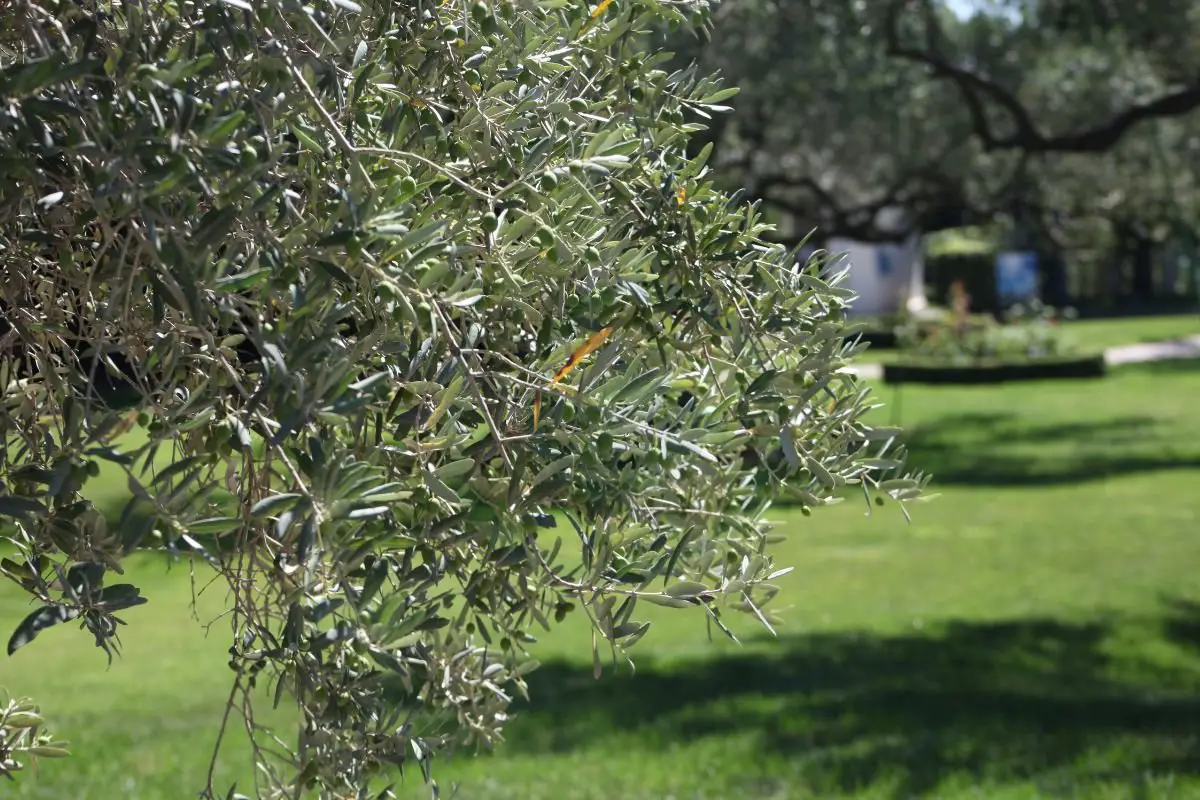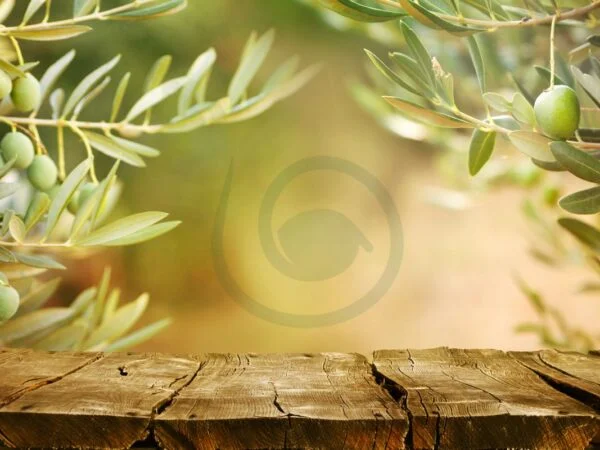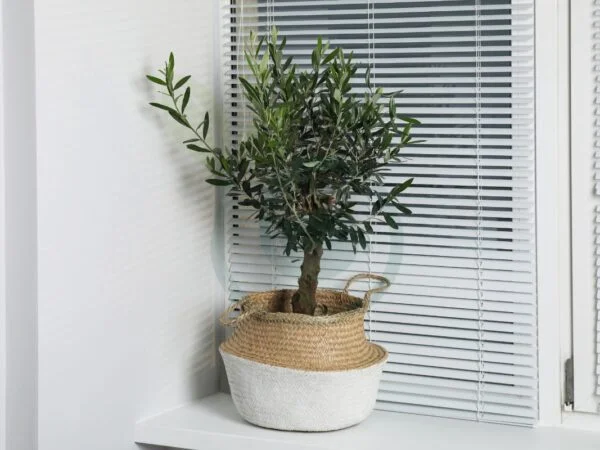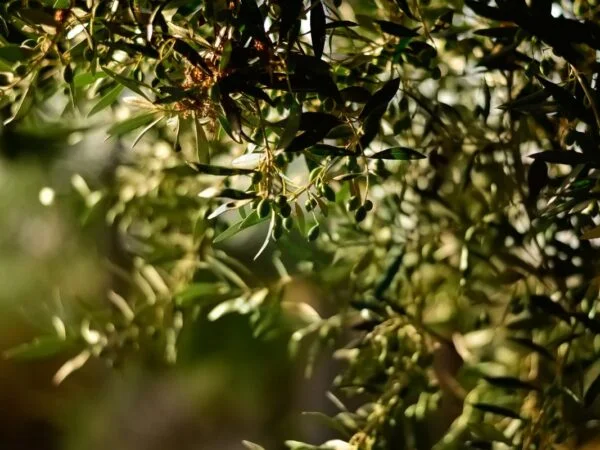Curious about the growth rate of fruitless olive trees? Wonder no more! In the world of gardening, these plants stand out for their slow and steady pace compared to other varieties. While some plants shoot up like rockets, fruitless olives take a more leisurely stroll towards maturity. Understanding this contrast can help you plan your garden with realistic expectations and patience in mind. So, if you're ready to learn just how fast these unique trees grow and what factors influence their growth rate, keep reading!
Key Takeaways
- Optimal Conditions: Provide fruitless olive trees with well-draining soil, full sun exposure, and adequate space for growth to ensure healthy development.
- Watering Tips: Water newly planted trees deeply and regularly, gradually reducing frequency as they establish to promote drought resistance and overall health.
- Pruning Guidelines: Regularly prune fruitless olive trees to maintain shape, remove dead branches, and promote air circulation within the canopy for better growth.
- Landscaping Benefits: Utilize fruitless olive trees in landscapes for their evergreen foliage, drought tolerance, and low maintenance requirements, adding aesthetic value to outdoor spaces.
- California Adaptation: Consider planting fruitless olive trees in California, where they thrive in the Mediterranean climate, offering a beautiful and practical addition to gardens and yards.
- Continuous Care: Monitor for pests, provide occasional fertilization, and stay attentive to any signs of disease to ensure the long-term health and vitality of fruitless olive trees.
Understanding Fruitless Olive Trees
Fruitless olive trees exhibit a moderate growth rate, steadily increasing their height each year. Factors like climate and care practices can influence the annual increase of these trees, impacting their overall growth pattern. With appropriate landscape conditions in place, fruitless olive trees can experience consistent and healthy development over time.
The growth rate of fruitless olive trees is characterized by several inches added to their height annually. This steady progression contributes to the tree's gradual maturation process, requiring patience from growers as they nurture these unique specimens. By providing optimal care and suitable environments for growth, individuals can support the healthy development of fruitless olive trees.
- Moderate growth rate
- Annual increase influenced by climate and care
- Consistent development with proper conditions
It takes several years for fruitless olive trees to reach maturity and showcase their full beauty potential. The maturity time of these trees typically spans between 5 to 10 years or longer, depending on various environmental elements. Cultivating fruitless olives demands dedication and patience as growers witness the transformation from saplings into magnificent mature trees.
The journey towards maturity involves nurturing fruitless olive trees through different stages of growth until they unveil their complete splendor. Patience is key when fostering these distinctive botanical wonders, such as fruitless olive trees, as they evolve into stunning landscape features that captivate with their silver-gray foliage and occasional blooming displays.
Ideal Growth Conditions
Light Requirements
Fruitless olive trees need ample sunlight to thrive, requiring a minimum of 6 hours of direct sun daily. These trees excel in bright light and may struggle in shaded spots. Sunlight is crucial for their healthy growth.
Pros:
- Enhances healthy growth
- Vital for development
Cons:
- Struggles in shade
- May hinder growth
Climate Needs
Adaptable to various climates like Mediterranean, subtropical, and arid regions, fruitless olive trees withstand heat and drought well. However, extreme cold or frost can harm their growth.
- Fruitless olive trees are versatile across climates.
- They cope well with heat and drought.
- Cold or frost can impede their growth.
Soil Preferences
Thriving in well-draining soil rich in organic matter, fruitless olive trees tolerate sandy, loamy, and clay soils alike. Optimal pH levels range between 6.0 to 8.0 for their best growth.
- Key Information/Items:
Water and Drought Resistance
Irrigation Needs
Fruitless olive trees need regular watering during their early stages. Deep, infrequent watering is best for encouraging deep root growth and tree health. Overwatering should be avoided to prevent issues like root rot.
To thrive, fruitless olive trees require consistent irrigation until they establish a robust root system. Once mature, these trees exhibit impressive drought tolerance due to their ability to survive in dry conditions. They are popular choices for landscapes that prioritize water conservation.
Drought Tolerance
Young or newly planted fruitless olive trees may need more frequent watering until they develop a strong root system. Their excellent drought resistance once established makes them ideal for regions with limited water availability. The capacity of these trees to endure arid conditions contributes to their popularity in water-wise landscaping projects.
Care and Maintenance
Pruning Guidelines
Pruning fruitless olive trees is crucial for their growth and health. The best time to plant these trees is in late winter or early spring. Planting during this period allows the tree to establish roots before hot summer temperatures arrive, ensuring better survival rates. Avoid planting the fruitless olive tree during extreme weather conditions or frozen ground, as it can hinder root development.
Regular pruning helps maintain the shape and structure of fruitless olive trees while promoting air circulation and sunlight penetration. Techniques like staking, training, and shaping are essential for guiding the growth of these trees effectively. Proper pruning not only enhances the tree's appearance but also contributes to its overall health by reducing overcrowding within the canopy.
Disease Resistance
Fruitless olive trees boast disease resistance against many common ailments that plague fruit-bearing varieties. While they are generally hardy, certain fungal infections or bacterial diseases may still affect them under specific conditions. To prevent disease issues, cultivate good sanitation practices around your tree and conduct regular inspections to catch any signs of disease early on.
Ensuring proper care practices will help mitigate potential disease risks associated with fruitless olive trees. By maintaining a clean environment around your tree and promptly addressing any signs of infection, you can safeguard its health effectively.
Benefits in Landscapes
Aesthetic Appeal
Fruitless olive trees are prized for their timeless and elegant aesthetic appeal in landscapes. Their silver-gray foliage and unique branching patterns create a visually striking presence, adding a touch of sophistication to any garden. These trees can serve as focal points, offering a sense of grandeur and elegance to the landscape design. They can be used as shade providers, creating cozy spots under their lush canopy. Moreover, fruitless olive trees can also be shaped into ornamental hedges, enhancing the overall visual appeal of the outdoor space.
In terms of low maintenance, fruitless olive trees are relatively hassle-free once they have settled into suitable growing conditions. Unlike their fruit-bearing counterparts that require regular pruning and fertilization, these trees need minimal upkeep efforts. With just some occasional trimming to maintain shape and size, along with basic watering during the early stages post-planting, fruitless olive trees thrive without much intervention from landscapers or gardeners. Periodic checks for pests or diseases ensure that these trees remain healthy and vibrant throughout the year.
Drought Resistance
One significant advantage of fruitless olive trees is their excellent drought resistance thanks to their deep root systems that tap into water sources deep underground. Once established in a landscape design scheme, these trees exhibit remarkable resilience against prolonged dry spells without needing frequent watering sessions. Their ability to conserve moisture efficiently makes them an ideal choice for water-wise gardening practices where sustainability is key. This feature not only benefits the tree's health but also reduces water consumption in landscaping projects—a win-win situation for both aesthetics and environmental conservation.
Pruning Fruitless Olive Trees
Importance of Pruning
Pruning fruitless olive trees is essential for maintaining their health, shape, and overall appearance. Regular pruning helps eliminate dead or diseased branches, encouraging new growth and enhancing air circulation within the canopy. Proper pruning techniques also benefit fruit production in varieties that bear fruits. By trimming away unwanted branches, you're essentially giving your olive tree a fresh start to thrive better.
Proper pruning can make all the difference. Imagine trying to walk through a crowded room; reducing unnecessary branches is like clearing a path for fresh air and light to reach every corner of the space—essential for optimal health.
Pruning Techniques
To maintain healthy fruitless olive trees effectively, it's crucial to remove any dead, damaged, or crossing branches during pruning sessions. Thinning out the canopy allows more sunlight to penetrate through the leaves while reducing disease risks by improving air circulation around each branch. However, be cautious not to overdo it with excessive pruning as this could hinder your tree's growth potential and weaken its overall structure.
By selectively removing specific branches when necessary instead of excessively cutting back entire sections at once can help maintain a balanced silhouette for your olive tree without compromising its ability to flourish naturally. Think of it as giving your plant some much-needed breathing room rather than suffocating it under too many restrictions.
Growing in California
Ideal Regions
Fruitless olive trees grow at a moderate pace, typically reaching around 25 feet in height over a span of 10 to 15 years. In regions like California with Mediterranean-like climates, these trees flourish due to the mild winters and hot summers. They can adapt well to subtropical areas by receiving proper care and irrigation. However, extremely cold temperatures or high humidity levels might hinder their growth.
In gardens, fruitless olive trees offer various advantages beyond their growth rate. Their aesthetic appeal adds charm to outdoor spaces while being evergreen throughout the year. Planted strategically, they provide shade from the scorching sun or act as windbreaks and privacy screens for your garden area. Moreover, these trees attract beneficial wildlife such as birds and butterflies into your garden setting.
Additional Considerations
Size and Root System
Fruitless olive trees grow moderately, reaching heights of 20 to 30 feet when fully mature. Their roots are extensive and deep, allowing them to efficiently absorb water and nutrients from the soil. When planting these trees, it's crucial to consider their final size and the spread of their roots. Selecting appropriate locations is essential for their healthy growth.
These trees have a robust root system that helps them thrive in various conditions by accessing resources effectively. For instance, they can withstand drought conditions due to their ability to draw water from deep within the ground. This makes fruitless olive trees suitable for regions like California with its dry climate.
Leaf Drop Issues
During late winter or early spring, fruitless olive trees may experience leaf drop as part of their natural cycle. However, environmental stressors, nutrient deficiencies, or pest infestations can also cause excessive leaf shedding throughout the year. To mitigate this issue, consistent care practices such as regular watering schedules help maintain tree health.
Leaf drop is a common occurrence among fruitless olive trees but can be managed with proper maintenance routines like fertilization at key times during the year. Implementing pest control measures will prevent infestations that could lead to increased leaf loss over time.
You've now become a pro at nurturing fruitless olive trees! Remember, these trees may not bear fruit, but they sure bring beauty and value to your landscape. Keep in mind the ideal conditions they need, the watering tips, and the importance of regular pruning. Whether you're in California or elsewhere, these trees can thrive with your care.
So, go ahead and plant those fruitless olive trees with confidence. Your efforts will pay off with stunning greenery and a touch of Mediterranean charm in your surroundings. Get your hands dirty and watch these trees grow into magnificent additions to your outdoor space!
Frequently Asked Questions
How fast do fruitless olive trees typically grow?
Fruitless olive trees are slow growers, usually averaging around 6 to 10 inches of growth per year. Factors like soil quality, sunlight exposure, and pruning practices can influence their growth rate.
What are the ideal growth conditions for fruitless olive trees?
Fruitless olive trees thrive in well-draining soil with full sun exposure. They prefer a Mediterranean-like climate with hot, dry summers and mild winters. Providing proper irrigation and occasional fertilization can also promote healthy growth.
How should I care for and maintain my fruitless olive tree?
Regular watering during the growing season is crucial for young trees. Pruning should be done annually to remove dead or crowded branches and shape the tree. Applying a layer of mulch around the base helps retain moisture and suppresses weeds.
What benefits do fruitless olive trees offer in landscapes?
Besides their ornamental value with silvery-green foliage, fruitless olive trees provide shade, privacy screening, and attract wildlife like birds. Their drought tolerance makes them suitable for water-wise landscaping designs while adding a touch of Mediterranean charm.
When is the best time to prune fruitless olive trees?
The ideal time to prune fruitless olive trees is during late winter or early spring when they are dormant. Avoid heavy pruning during summer as it may stress the tree due to excessive heat.
Image Source: Paid image from CANVA





